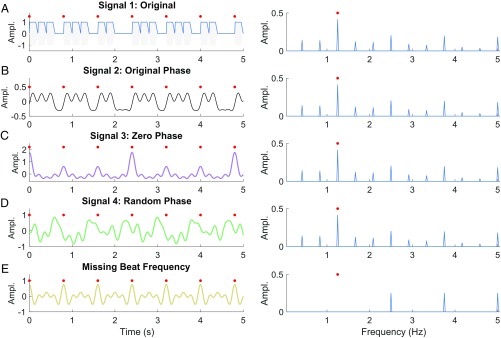Fig. 1.
Why phase matters. (A, Left) Unsyncopated low-carrier frequency stimulus (gray) and envelope (blue) used in Lenc et al. (1), red circles mark beat times (see figure S1 in ref. 2). (A, Right) Amplitude spectrum of stimulus envelope, beat frequency at 1.25 Hz. (B) Signal reconstruction using original amplitudes and phases of just the 12 frequency components considered by the method. Original stimulus structure is largely preserved. (C) Same as B but with phases set to zero. Constructive interference between frequency components results in a signal that appears better locked to the beat. (D) Same as B but with phases set randomly between 0 and 2π. Frequency components no longer align to produce sharp time domain features aligned to beat times. Note that the signals in A–D are considered identical by frequency tagging since they share the same amplitude spectrum up to 5 Hz (Right). (E) A signal clearly aligned to beat times (Left), but with zero amplitude, and therefore a negative z score, at the beat frequency (Right).

